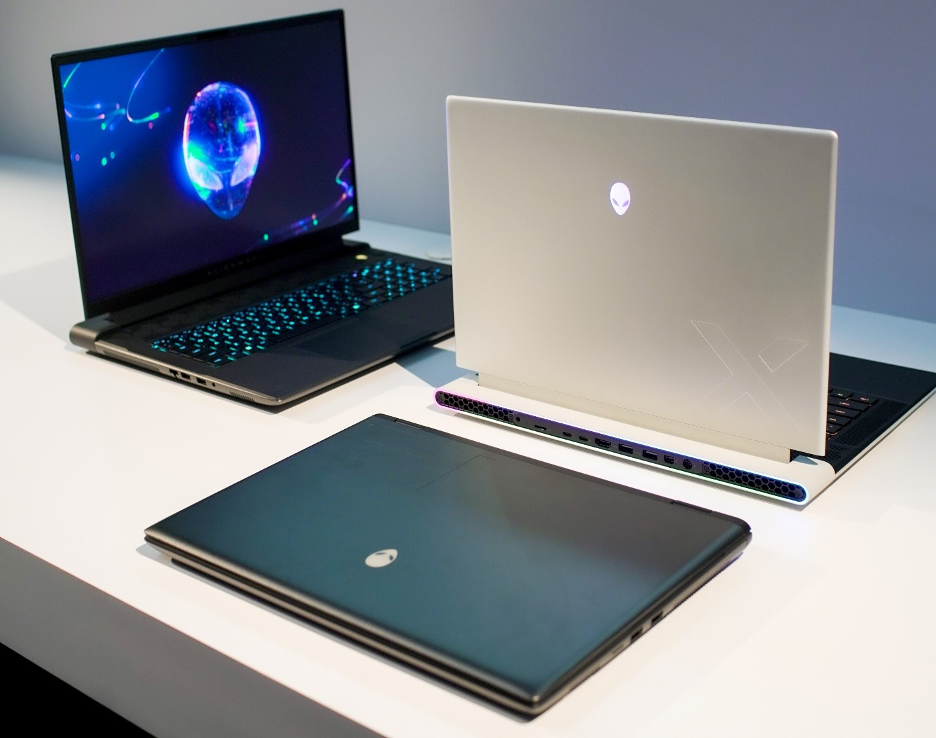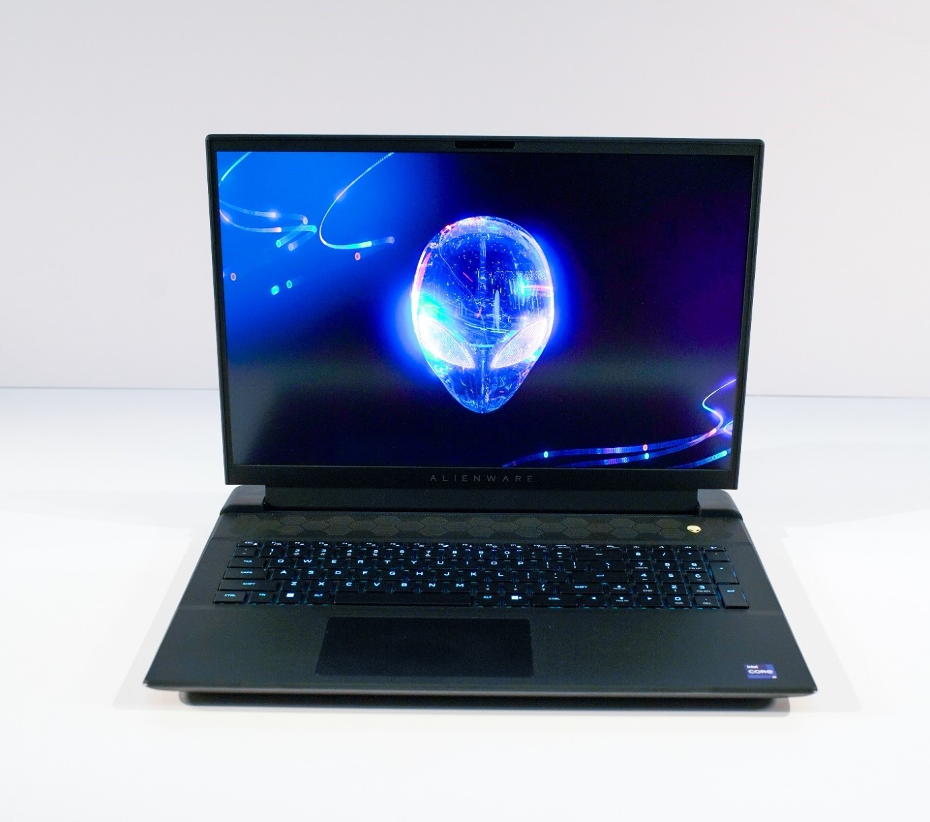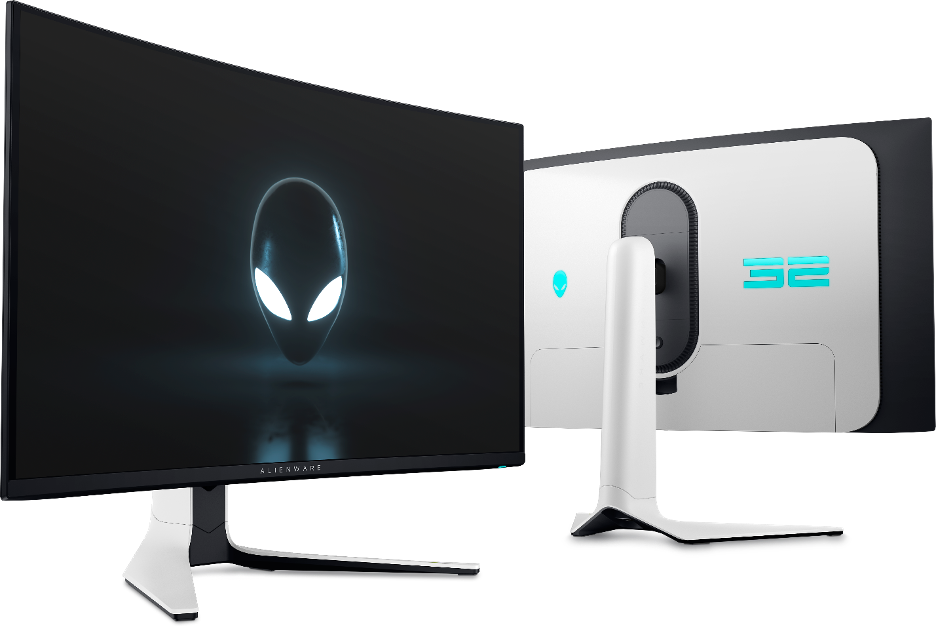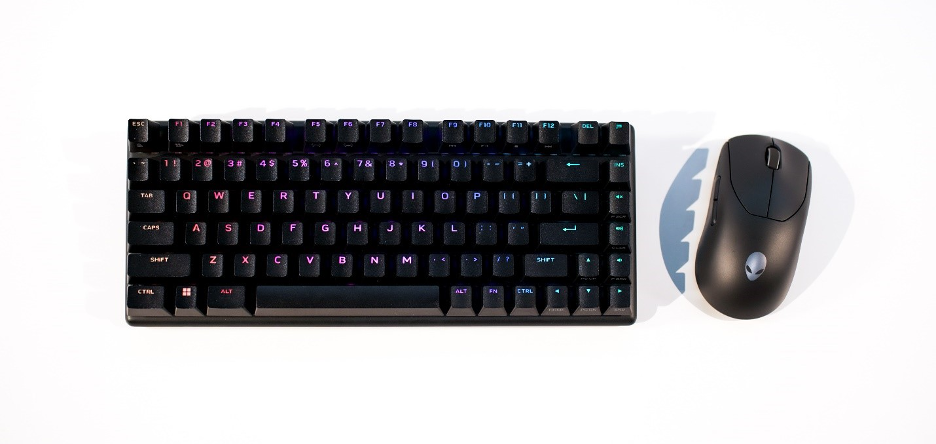
CES 2024 is in full swing and is bringing an absolute avalanche of new PCs from all the usual suspects. One brand that has historically launched many of its products at CES is Alienware, which this year has a lot of new things to talk about. This includes the implementation of Intel’s new Core Ultra processors, which are poised to turn any PC into an AI PC, even if it’s for gaming. Thankfully, I got to preview some of these products in person a few weeks before CES and have some thoughts about them and how they might be received. Without further ado, here is Alienware’s new 2024 product lineup.
The x16 R2 Laptop
The X Series is usually where Alienware puts its best foot forward. That means embracing the latest and greatest technologies available and using them to equip gamers who want a powerful gaming experience in a sleek form factor. Last year, Alienware introduced the x16, and I was very impressed that Dell could squeeze an NVIDIA RTX 4090 into such a thin, light machine. For this year’s model, Alienware also implemented 100 micro-LED lighting. Speaking of lighting, this year Alienware has also created a new Stealth Mode, which shuts off all the lights on the PC and turns the keyboard LEDs white while also lowering the sound level.
That said, the x16 R2 still supports up to 175 watts of graphics power, with a total system power of 220 watts when paired with Intel’s Core Ultra processors. The x16 R2 will ship with up to an Intel Core Ultra 9 185H with up to 32GB of RAM and up to 8TB of SSD in RAID 0. Interestingly, Dell offers the Alienware x16 R2 with faster DDR5X 7467 MT/s when configured with 32GB and an RTX 4080 or 4090, which probably makes sense because that GPU needs a lot more CPU and memory bandwidth to feed it. I am a little disappointed to see that there is no Wi-Fi 7 option. The Alienware x16 R2 comes in a single display configuration with a QHD+ 240 Hz G-Sync monitor with 100% DCI-P3 color gamut, which is great. That said, I’d also like to see an OLED option.
This feels like a refresh rather than a generational improvement, especially since so many things appear to be the same from the R1 version. (Hopefully, in future iterations Alienware will find a way to support a full-size SD card rather than MicroSD, but I won’t hold my breath.) Many people, myself included, like to use these gaming notebooks for both gaming and video editing, and there aren’t a lot of laptops that are this portable and powerful at the same time. Even the 360-watt GaN charger is considerably smaller than a non-GaN charger, which helps support the X Series in cutting-edge technology implementation. The x16 R2 starts at $2,099 and will be available “soon.”
The m16 R2 Laptop
The new m16 R2 is a considerable redesign, with Alienware dropping the large thermal shelf from the m16 R1, leading to a 15% reduction in footprint. Achieving this while maintaining the same screen size is a huge plus, especially considering how hard it is to fit notebooks larger than 15 inches into backpacks. Even with this reduced footprint, Alienware is still offering up to the Intel Core Ultra 9 185H and NVIDIA RTX 4070. Alienware also re-engineered the Cryo-tech thermal design with a two-fan configuration, an oddly specific 93 fan blades, and four copper heat pipes. This laptop also ships with user-upgradeable DDR5 memory and user-upgradeable M.2 SSD, supporting the same storage configurations as the x16, up to 8TB. Interestingly, Dell offers the m16 R2 in 64GB, which it does not for the x16 R2.
The m16 R2 also ships standard with Wi-Fi 6E, but it does offer an upgrade to Wi-Fi 7. I have difficulty suggesting anyone use anything other than Wi-Fi 7 for gaming, especially considering all the latency and performance improvements it brings. I think Wi-Fi 7 should be standard across all gaming notebooks north of $1,500. The m16 R2 starts at $1,649 and will be available starting January 11. I believe that this laptop is the one that will enable Dell to be more competitive in the market, but the company may have to be a bit more aggressive on price—bringing it down to around $1,500—to take more share of that market segment. I like what Dell has done with the m16, especially considering that the x16 is where the premium buyer will likely go if they don’t get an m18. Speaking of which . . .
The m18 R2 Laptop
The m18 is Alienware’s desktop replacement-class laptop. That means the m18 R2’s job is to deliver the absolute maximum level of performance without any compromises. This also means providing a level of CPU performance that the Core Ultra family does not yet offer for mobile platforms. As such, Alienware has instead opted for the refreshed Intel 14th Gen series, up to the Core i9-14900HX processor. Alienware also offers two different display flavors for the m18 R2, including a 165 Hz 1600p display with G-Sync or an absurd 480 Hz 1080p display, which also has G-Sync and FreeSync. On the GPU side, Alienware offers the m18 R2 in up to a RTX 4090 configuration, which is not surprising since the x16 also offers it.

What is interesting is the support for 64GB of RAM and the usual 10TB max configuration with RAID 0 for storage, which is the largest configuration for memory and storage that Alienware offers. This laptop also has a 360-watt small-form-factor GaN charger for RTX 4080 or 4090 GPU configurations. This is necessary when you consider that the m18 R2 offers up to 270 watts of total performance power, which is enabled by Alienware’s re-engineered vapor chamber, designed to further improve thermal performance. The m18 R2 starts at $1,899 and will be available January 11, with the RTX 4080 and RTX 4090 configurations coming later.
OLED Monitors — 32-inch and 27-inch
Alienware has introduced two new OLED monitors, doubling the size of its OLED lineup. Truthfully, I have no reason to be this excited about monitors, yet I literally couldn’t take my eyes off the 32-inch OLED monitor. As someone who regularly uses and games on an OLED monitor, I no longer enjoy gaming on other monitors. Alienware’s 34-inch Ultrawide has changed me and has been praised as the best gaming monitor across the industry. The new 32-inch OLED monitor doesn’t just improve upon that formula—it blows it entirely out of the water.
The new 32-inch (AW3225QF) monitor has a slightly curved 4K panel with considerably more pixels than the 3440 x 1440 resolution on the Ultrawide. Additionally, Alienware has upped the refresh rate from 175 Hz in the old OLED monitors to 240 Hz, which will honestly be impossible to even achieve outside of really low graphical fidelity eSports games (or Counter-Strike 2) because driving 4K pixels at 144 Hz is already a feat for most GPUs available today. As if all that wasn’t enough, this new generation of QD-OLED 4K 240 Hz panels has an even faster response time of 0.03 ms, a 3X improvement from the previous generation’s 0.1 ms. With that kind of response time, it’s technically so fast that it might be perceived as literally instant response time by almost all humans. This is even more impressive when you consider that 1ms—and 3ms before that—were considered the industry standard for fast response times. Now, we’re measuring in decimals of a millisecond and should probably move to counting them in microseconds instead.

Alienware has also included eARC compatibility for connecting to soundbars and other high-end sound equipment, and the HDMI 2.1 FRL allows gamers to play console games at 4K 120 Hz if they don’t have a PC. The new 32-inch 4K QD-OLED Alienware monitor also comes with G-Sync support, VESA DisplayHDR TrueBlack 400 certification, and Dolby Vision.
Alienware’s new 27-inch (AW2725DF) monitor is also QD-OLED enabled, but focused on a much different gamer, who tends to be younger and more focused on eSports-tier performance. That’s because the 27-inch is not only a flat panel OLED monitor, but also a 360 Hz OLED monitor running at 1440p, so there’s no sacrifice on resolution. Usually, such high-refresh monitors tend to ship with 1080p resolutions, and only recently have we seen 1440p monitors with this high of a refresh rate. What’s also impressive about this monitor is that the gamer will get the same ultra-low response times, high refresh rate, impeccable colors, and contrast of an OLED display. While the other monitor has G-Sync support, the 27-inch monitor comes with FreeSync Premium Pro certification and VESA AdaptiveSync. Additionally, it has DisplayHDR True Black 400 certification from VESA and, like the 32-inch model, has 99% DCI-P3 color coverage. Alienware also went for a more eSports gamer-centric design for this monitor, giving it a minimal footprint. Personally, I have been converted to using monitor arms and believe them to be the superior way to use a monitor. Both of these new models support the use of monitor arms through VESA mounts.
Dell will ship the 32-inch 4K QD-OLED monitor at $1,199, which is an incredible value when considering that the Alienware 34-inch QD-OLED monitor from last year sold for the same price. That monitor was already a great deal then, so Dell continues to uphold the value of these Alienware QD-OLED monitors. The 27-inch 360 Hz QD-OLED monitor will start at $899, which is still a pretty good value compared to other 360 Hz 1440p 27-inch monitors on the market, but with the price being so close to the 32-inch monitor, it’s a no-brainer for me as a gamer which is more attractive. That said, not all gamers are alike and there will be people drawn to such a technologically advanced eSports-class gaming monitor. These monitors are slated to be available starting January 11.
Peripherals
Dell has a long-standing relationship with eSports teams such as Team Liquid and has worked with them to create better gaming peripherals. Emerging from that work, Alienware has announced two new gaming products as part of its Pro Series of peripherals. The Alienware Pro Wireless gaming keyboard is a 75% keyboard with hot-swappable switches, which is a must for any enthusiast keyboard coming out today. Alienware opted for linear mechanical switches, which may not be for everyone, so it is great that it also included hot-swappable switches. I like my switches clickier with more actuation force, so I gravitate towards more blue-like switches.
Alienware also used double-shot PBT for the keycaps, so there’s no concern for them to rub off over time. And of course, it’s got RGB. It’s also wireless, with a 72-hour battery life when RGB is set to 50%, or 798 hours with it turned off. The keyboard also supports 2.4 GHz wireless, BT 5.1, or USB-C connectivity. I have not used many wireless keyboards for gaming, but I suspect this trend will grow since wireless mice have reached the point of being good enough for FPS gaming. A big part of that is the 1 KHz polling rate, which has become standard within the industry.

Alienware also announced the Alienware Pro Wireless gaming mouse with a crazy wireless polling rate of 4 KHz and a wired polling rate of 8 KHz, ensuring the fastest polling rate possible while balancing battery life. Speaking of battery life, it gets 120 hours at 1 KHz and 32 hours at 4 KHz. The mouse also charges up for six hours of use in only five minutes. It uses a 26K DPI optical sensor for extremely fine-detail tracking and has a max acceleration of 50G. Alienware has also opted for magnetic-force keyplates with optical switches for the fastest click and double-click response times.
At only 60g, the Pro Wireless mouse is also super lightweight, an extremely popular trend right now; it reminds me of the days when we put weights in our mice to weigh them down just right. The Pro Wireless mouse, which is made with 82% post-consumer recycled plastic, has an aluminum scroll wheel for improved weight and glide. It also comes with a built-in dongle, but to be perfectly honest, I think my biggest pet peeve with this product is that there isn’t a single Alienware product I can buy today that doesn’t already have the 2.4 GHz low-latency connectivity built-in. Using up valuable USB ports for dongles and needing to keep track of dongles is a bad user experience, and exhausting if you use a laptop and need to unplug everything regularly when transporting. We’ve seen Alienware’s competitor HP Omen move away from this with its newest gaming laptop, and I think this is something that the whole industry should be adopting. If all these PC OEMs now have large peripheral businesses, why don’t they each embrace a “better together” story to entice more people to bundle peripherals with PCs? My expectations might be a bit high for this, but I’d also love to see wireless charging, something like what Logitech and Corsair offer today. Heck, even a Qi-based solution would be nice. The Alienware keyboard starts at $199 and the mouse starts at $149; both of them launch on January 11.
Wrapping up
Alienware continues to impress at CES 2024, especially with the newly redesigned Alienware m16 and the stunning Alienware 32-inch AW3225QF curved QD-OLED gaming monitor. Alienware is also reworking a lot of the software that connects many of its latest PCs and peripherals with its Alienware Command Center. I am looking deeper into that and the complete Alienware ecosystem and will soon have a report on how things are going. Right now, it looks like the Alienware ecosystem is building out nicely, and all the different parts have a robust and cohesive nature—except for the need to use dongles, which I hope goes away soon.
I think the new QD-OLED monitors will be very exciting additions to the Alienware lineup. Still, it does look like they have more competition this year, with multiple other makers using the same panels in their monitors as well. That said, Alienware does have the QD-OLED pedigree and probably the best warranty for OLED monitors at three years, including burn-in protection. I can’t wait to get my hands on the new monitor, and I’m eager to check out the m16 long-term to see how the new design fares.






















































































